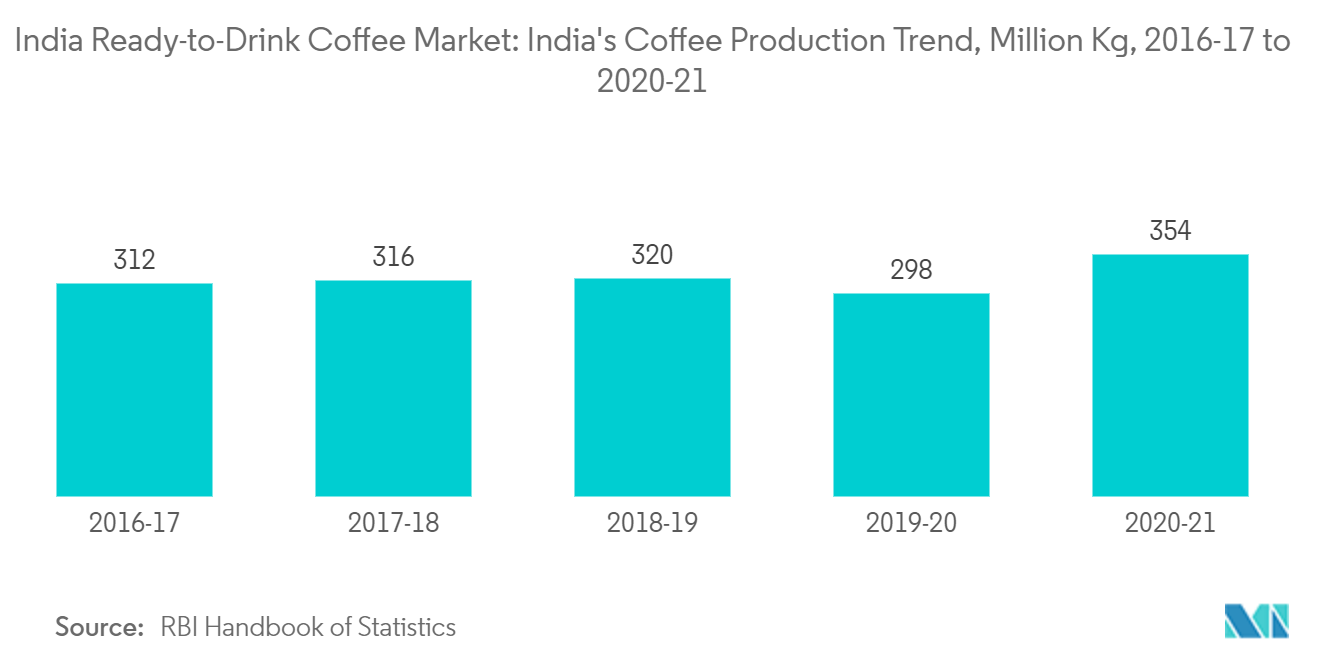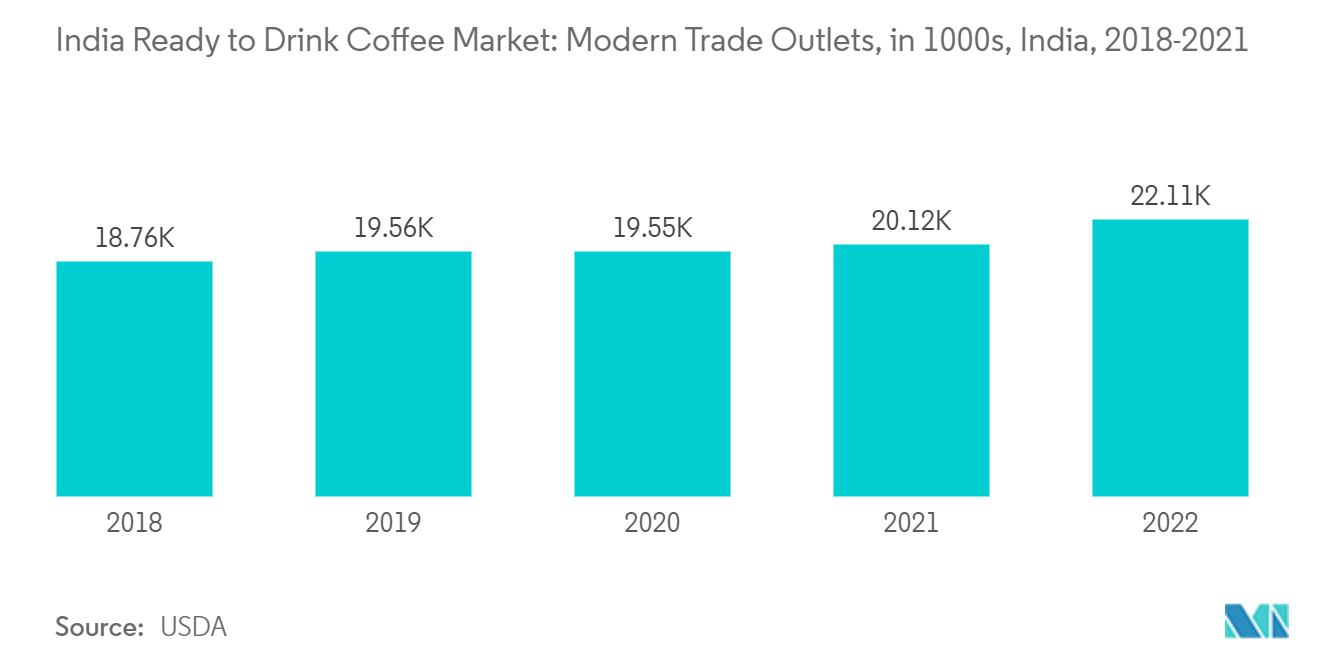Market Trends of India Ready-to-Drink (RTD) Coffee Industry
This section covers the major market trends shaping the India Ready-to-Drink (RTD) Coffee Market according to our research experts:
Increase in Production and Easy Availability of Coffee Across India Driving the Market
The ready-to-drink coffee market is fragmented in India, with a wide variety of brands offering their products through almost all types of retail channels. The retail channels include traditional outlet types like Kirana stores, indicating strong demand and market penetration in India. Due to its excellent quality and high premium in the international markets, Indian coffee is among the best in the world. Furthermore, manufacturers are constantly trying to fulfill the changing consumption pattern by including the idea of coffee being sold as a quick pick-me-up drink available in many flavors, boosting the market demand for the product.
The Indian coffee industry is booming by exporting nearly USD 720 million worth of coffee beans, which mainly include roasted Robusta coffee, in the financial year 2020-2021, as per the report by the global trade finance company. The production of coffee beans has traditionally been in India's south portion. However, about 60% to 75% of coffee cultured and manufactured in the region is being exported while the rest is consumed as coffee has been an export-oriented product in the region. The high production base of coffee across the region has been enabling the players in the market to cut the production costs of the RTD coffee drinks and offer them at competitive prices to attract more consumers, in turn driving the market studied across the region.

Supermarket/Hypermarkets are the Most Preferred Distribution Channel
The distribution of ready-to-drink coffees has expanded to several mainstream channels, such as supermarkets, hypermarkets, specialist stores, etc. Among the numerous outlets available, supermarket/hypermarkets are preferred in the country as it has varied varieties of coffees from different companies and caters to consumers' preferences, which is anticipated to drive market growth in the future. The increase in demographic spending, ease, and convenience through supermarket purchases is expected to pave a strong pathway for RTD coffee manufacturers to penetrate the market, particularly in developing countries, where these stores are being set in large numbers. Physical shops, like Café Coffee Day, are expected to retain their position in such a competitive environment. Additionally, the start-ups offering RTD coffee have also joined the race to increase their revenue in the Indian Market.
For example, in addition to its presence at more than 15,000 stores throughout India, Kings Coffee is also present in airports, quick service restaurants, general merchandise, and movie theaters. It is sold in retail establishments like Spencer's, 24/7, Wellness Forever, Namdharis, Lulu, Le Marche, and Reliance Signature. Additionally, the products can be found on e-commerce websites and other marketplaces, including Blinkit, Bigbasket, Zepto, Amazon, and Flipkart. Around 70 distributors for the business exist around the nation. Hence, the increase in modern trade outlets such as hypermarkets/supermarkets, which has led to the easy availability of RTD coffee products, and discounts offered by such distribution channels are driving RTD coffee sales across the country.


